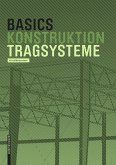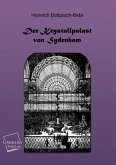Flat glass opens up more possibilities for the planner than virtually any other material. Because of the technological complexity of using it, however, no specific structural forms have been developed for glass supporting frameworks as they have been for wood, concrete, and steel. This book is thus the first to present a coherent guide to the planning and design of glass supporting frameworks. The focus is on the pressure-resistant, flat supporting element as a basic building block for broad supporting structures. The spatial and constructive forms of multifunctional, self-supporting glass envelopes are vividly illustrated and systematically explained. The constructions presented exhibit new aesthetic qualities, based not on the dictum of "dematerialization” but on the poetry of gleaming and transparent planes. They ring in a new chapter in the history of glass architecture.
Kaum ein anderes Material eröffnet dem Planer so viele Möglichkeiten wie Flachglas. Durch die technologische Komplexität des Baustoffs in der Anwendung wurden jedoch bisher im Gegensatz zum Beton-, Stahl- oder Holzbau keine spezifischen Strukturformen für Glastragwerke entwickelt und ausgeführt.
Mit diesem Buch wird somit erstmals eine zusammenhängende Anleitung zum Planen und Gestalten von Glastragwerken vorgelegt. Im Zentrum steht dabei das druckfeste, flächige Tragelement als Grundbaustein für weit gespannte Tragstrukturen. Dabei werden die Entwurfsparameter für Raum- und Konstruktionsformen multifunktionaler, selbsttragender Glashüllen systematisch und anschaulich erklärt. Die präsentierten Konstruktionen zeigen neue ästhetische Qualitäten auf, die nicht auf dem Diktum der "Entmaterialisierung", sondern auf der Poesie leuchtender, durchscheinender Flächen beruhen und somit ein neues Kapitel in der Glasarchitektur einläuten.
Kaum ein anderes Material eröffnet dem Planer so viele Möglichkeiten wie Flachglas. Durch die technologische Komplexität des Baustoffs in der Anwendung wurden jedoch bisher im Gegensatz zum Beton-, Stahl- oder Holzbau keine spezifischen Strukturformen für Glastragwerke entwickelt und ausgeführt.
Mit diesem Buch wird somit erstmals eine zusammenhängende Anleitung zum Planen und Gestalten von Glastragwerken vorgelegt. Im Zentrum steht dabei das druckfeste, flächige Tragelement als Grundbaustein für weit gespannte Tragstrukturen. Dabei werden die Entwurfsparameter für Raum- und Konstruktionsformen multifunktionaler, selbsttragender Glashüllen systematisch und anschaulich erklärt. Die präsentierten Konstruktionen zeigen neue ästhetische Qualitäten auf, die nicht auf dem Diktum der "Entmaterialisierung", sondern auf der Poesie leuchtender, durchscheinender Flächen beruhen und somit ein neues Kapitel in der Glasarchitektur einläuten.







